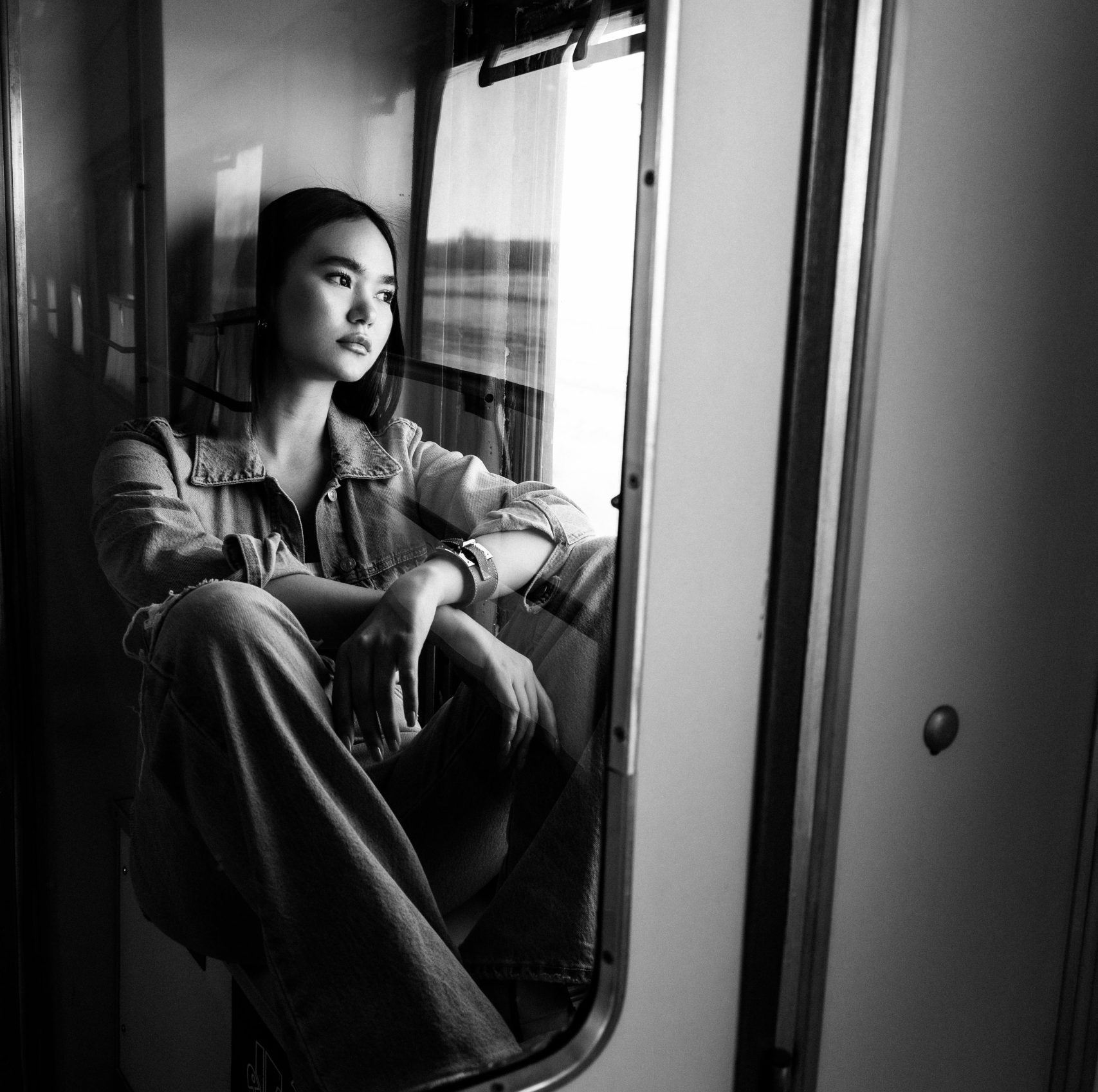In the summer of 2010, Emma boarded a train bound for Paris, her eyes drawn to the window as the European countryside sped by. She was alone, lost in the haze of her thoughts—freshly graduated, navigating a solo trip through Europe, and feeling the weight of uncertainty about the future. Across the aisle sat Luca, a young photographer on his way to a Paris exhibition, camera in hand, always hunting for a moment to capture.
Without realizing it, Luca had spotted Emma through his lens. Something about the way she stared out of the window, with the afternoon sunlight casting soft shadows across her face, drew him in. He took a quick shot—just one, thinking it was another fleeting portrait of a stranger on the move, someone he’d never see again.
They exchanged brief smiles during the journey, but nothing more. As they disembarked in Paris, they walked off in separate directions, unaware of the small but significant moment they’d shared. Luca went on with his photography career, and Emma continued her travels, the memory of that train ride fading into the background.
Over the next few years, Luca’s work gained attention. One photograph, in particular, resonated with people—a black-and-white image of a woman staring pensively out a train window. The photo became one of his most popular pieces, featured in magazines and galleries, though Luca never knew who the woman in the photograph was. He simply referred to it as “The Traveler.”
Fast forward to 2016. Emma, now living in London, was working at an art gallery. One evening, she stumbled upon an article featuring Luca’s photography. As she scrolled through his work, her breath caught in her throat. There, among the collection, was her—sitting on that train, staring out the window, completely unaware that her picture had been taken. The photo was hauntingly familiar, yet distant. She read the caption beneath the photograph: The Traveler.
Unable to resist the strange pull of fate, Emma attended the opening night of Luca’s exhibition in London. When she finally saw him in person, Luca was explaining the story behind The Traveler to a small group. She approached him, and when he turned to face her, his expression changed instantly. Recognition flickered across his face.
“It’s you,” he said, stunned. “You’re The Traveler.”
The connection was electric. They spent the rest of the evening talking, recounting the train ride they both remembered so vividly—though for Luca, the moment had become iconic without him even knowing the stranger’s name. For Emma, it was surreal to realize she had unknowingly become a part of his art, a piece of his life’s work.
What started as a casual conversation led to something deeper. Over the next few months, their friendship blossomed into love. They revisited the cities Luca had captured, retracing the steps of that summer in Europe. Emma felt as though their missed encounter on that train had always been a part of their story, waiting to be unraveled.
In 2017, during a trip back to Paris, Luca proposed to Emma in front of a large print of The Traveler, now hanging in a Parisian gallery. She said yes, with tears in her eyes, knowing they had found their way back to each other through a single, random photograph—a moment frozen in time that had unknowingly bridged the gap between two lives.
A year later, they were married in an intimate ceremony, surrounded by friends and family. Luca’s photograph of Emma remains one of his most famous works, but it has taken on a far deeper meaning for both of them. Their love story, born from a missed connection, was immortalized in that single frame, destined to be shared forever.
